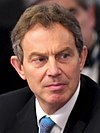Related Research Articles
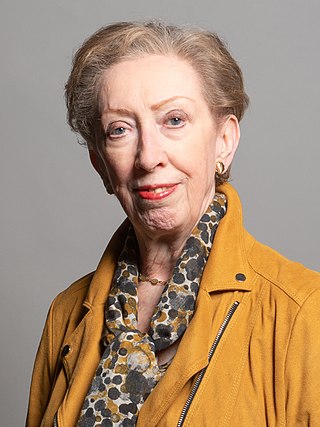
Dame Margaret Mary Beckett is a British politician who served as a Member of Parliament (MP) for over 45 years, making her the longest-serving female MP in British history. She was the MP for Lincoln from 1974 to 1979 and the MP for Derby South from 1983 to 2024. A member of the Labour Party, she became Britain's first female Foreign Secretary in 2006 and served in the Cabinet of Prime Minister Tony Blair throughout his tenure. Deputy Leader of the Opposition and Deputy Leader of the Labour Party from 1992 to 1994, Beckett briefly served as Leader of the Opposition and Acting Leader of the Labour Party following John Smith's death in 1994.

Hilary James Wedgwood Benn is a British Labour Party politician who has served as Shadow Secretary of State for Northern Ireland since 2023. A member of the Labour Party, he has been the Member of Parliament (MP) for Leeds Central since the 1999 by-election. Benn previously served as Environment Secretary and Development Secretary and as Chairman of the Brexit Select Committee.
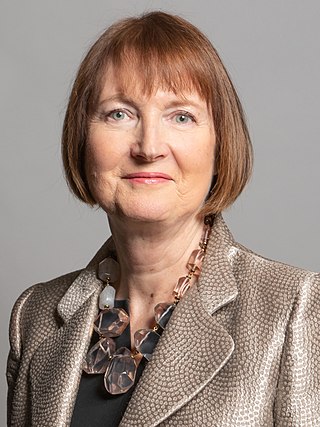
Harriet Ruth Harman is a British politician and solicitor who served as a Member of Parliament (MP) for over 40 years, from 1982 to 2024, making her one of the longest-serving MPs in British history. Harman latterly served as MP for Camberwell and Peckham from 1997 to 2024, and previously was MP for Peckham from 1982 to 1997. A member of the Labour Party, she has served in various Cabinet and Shadow Cabinet positions.
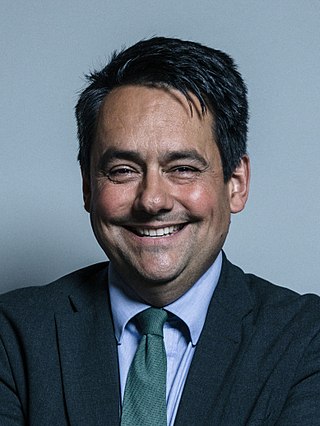
Stephen Twigg is a British Labour Co-op politician who has served as the 8th Secretary-General of the Commonwealth Parliamentary Association since August 2020. He served as Member of Parliament for Enfield Southgate from 1997 to 2005, and for Liverpool West Derby from 2010 to 2019.

Edward Samuel Miliband is a British politician serving as Shadow Secretary of State for Energy Security and Net Zero since 2021. He has been the Member of Parliament (MP) for Doncaster North since 2005. Miliband was Leader of the Labour Party and Leader of the Opposition between 2010 and 2015. Alongside his brother, Foreign Secretary David Miliband, he served in the Cabinet from 2007 to 2010 under Prime Minister Gordon Brown.

Patrick Bosco McFadden is a British Labour Party politician who has been Member of Parliament (MP) for Wolverhampton South East since 2005. He has been Shadow Chancellor of the Duchy of Lancaster and Labour National Campaign Coordinator since September 2023. He served as Shadow Chief Secretary to the Treasury between 2021 and 2023.

Barbara Mary Keeley is a British Labour Party politician who served as the Member of Parliament (MP) for Worsley and Eccles South, previously Worsley, from 2005 to 2024.

Lilian Rachel Greenwood is a British Labour Party politician serving as the Member of Parliament (MP) for Nottingham South since 2010, and the Shadow Minister for Arts, Heritage and Civil Society since 2023.
The Commons members of the Parliamentary Labour Party (PLP) elected 19 members of the Shadow Cabinet from among their number in 2010. This follows the Labour Party's defeat at the 2010 general election, after which the party formed the Official Opposition in the United Kingdom.
Elections to the Labour Party's Shadow Cabinet took place in July 1992. Shadow Cabinet elections generally take place at the beginning of a parliamentary session, but the 1992 vote was postponed until a new leader was elected to replace Neil Kinnock. Under the rules then in effect, the Commons members of the Parliamentary Labour Party elected 18 members of the Official Opposition Shadow Cabinet, who were then assigned portfolios by the leader. The Commons members of the PLP separately elected the Chief Whip, and the Labour peers elected the Leader of the Opposition in the House of Lords. In addition, the Leader of the Labour Party and Deputy Leader were members by virtue of those offices. The 18 elected members of the Shadow Cabinet were the ones with the largest number of votes, except that the three women with the most votes would be included in the 18, even if they were not among the top 18 based on the number of votes.
Elections to the Labour Party's Shadow Cabinet took place in October 1993, at the beginning of the 1993/1994 session of parliament. Under the rules then in effect, the Commons members of the Parliamentary Labour Party elected 18 members of the Official Opposition Shadow Cabinet, who were then assigned portfolios by the leader. The Commons members of the PLP separately elected the Chief Whip, and the Labour peers elected the Leader of the Opposition in the House of Lords. In addition, the Leader of the Labour Party and Deputy Leader were members by virtue of those offices. The 18 elected members of the Shadow Cabinet were the ones with the largest number of votes. Beginning with this election, MPs were required to vote for at least four women, but women were no longer guaranteed three places in the Shadow Cabinet.
Elections to the Labour Party's Shadow Cabinet took place in October 1994, at the beginning of the 1994/5 session of parliament. Under the rules then in effect, the Commons members of the Parliamentary Labour Party elected 18 members of the Official Opposition Shadow Cabinet, who were then assigned portfolios by the leader. The Commons members of the PLP separately elected the Chief Whip, and the Labour peers elected the Leader of the Opposition in the House of Lords. In addition, the Leader of the Labour Party and Deputy Leader were members by virtue of those offices. The 18 elected members of the Shadow Cabinet were the ones with the largest number of votes. MPs were required to vote for at least four women, but women were not necessarily guaranteed places in the Shadow Cabinet.
Elections to the Labour Party's Shadow Cabinet took place in October 1995, at the beginning of the 1995/6 session of parliament. Under the rules then in effect, the Commons members of the Parliamentary Labour Party elected 19 members of the Official Opposition Shadow Cabinet, who were then assigned portfolios by the leader. The Labour peers elected the Leader of the Opposition in the House of Lords. In addition, the Leader of the Labour Party and Deputy Leader were members by virtue of those offices. With this election, for the first time, the role Opposition Chief Whip was simply another portfolio to be handed out rather than an office separately elected by the PLP. The 19 elected members of the Shadow Cabinet were the ones with the largest number of votes. MPs were required to vote for at least four women, but women were not necessarily guaranteed places in the Shadow Cabinet.
Elections to the Labour Party's Shadow Cabinet took place in July 1996. Under the rules then in effect, the Commons members of the Parliamentary Labour Party elected 19 members of the Official Opposition Shadow Cabinet, who were then assigned portfolios by the leader. The Labour peers elected the Leader of the Opposition in the House of Lords. In addition, the Leader of the Labour Party and Deputy Leader were members by virtue of those offices. The 19 elected members of the Shadow Cabinet were the ones with the largest number of votes. MPs were required to vote for at least four women, but women were not necessarily guaranteed places in the Shadow Cabinet.

John Smith was Leader of the Labour Party and Leader of the Official Opposition from 18 July 1992 until his death on 12 May 1994. Smith became leader upon succeeding Neil Kinnock, who had resigned following the 1992 general election—for the fourth successive time, the Conservatives had won and Labour lost.
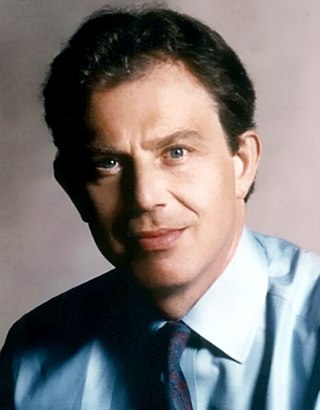
Tony Blair was Leader of the Labour Party and Leader of the Opposition from his election as Leader on 21 July 1994 until he became Prime Minister on 2 May 1997. Blair became leader upon the death of John Smith. Under Blair, the Labour Party was rebranded as New Labour to distance itself from previous Labour politics and the traditional idea of socialism. Despite opposition from Labour's left-wing, he abolished Clause IV, the party's formal commitment to the nationalisation of the economy, weakened trade union influence in the party, and committed to the free market and the European Union.
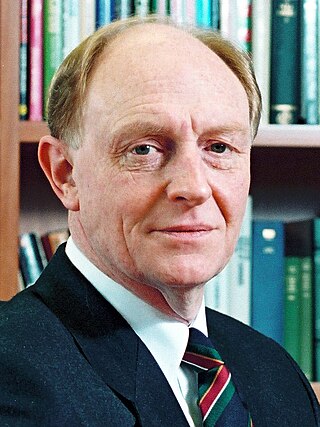
Neil Kinnock was Leader of the Labour Party and Leader of the Opposition from 2 October 1983 to 18 July 1992. He convincingly defeated Roy Hattersley, Eric Heffer, and Peter Shore in the 1983 leadership election, which was prompted by Michael Foot's resignation following the disastrous general election result earlier that year. Kinnock's period as Leader encompassed the bulk of the Thatcher premiership and the first two years of the Major premiership. Kinnock resigned in 1992 after losing his second election as Leader.
Elections to the Labour Party's Shadow Cabinet took place on 23 October 1991. Under the rules then in effect, the Commons members of the Parliamentary Labour Party elected 18 members of the Official Opposition Shadow Cabinet, who were then assigned portfolios by the leader. The Commons members of the PLP separately elected the Chief Whip, and the Labour peers elected the Leader of the Opposition in the House of Lords. In addition, the Leader of the Labour Party and Deputy Leader were members by virtue of those offices.

Keir Starmer became Leader of the Opposition in the United Kingdom after being elected as Leader of the Labour Party on 4 April 2020. He appointed his Shadow Cabinet on 5 and 6 April. Starmer has reshuffled his Shadow Cabinet five times: in June 2020, May 2021, June 2021, November 2021 and September 2023.

Keir Starmer, Leader of the Opposition in the United Kingdom, carried out a reshuffle of his shadow cabinet on 9 May 2021. This followed disappointing results for the Labour Party, including historic defeat in the Hartlepool by-election and the loss of hundreds of councillors in local elections across England.
